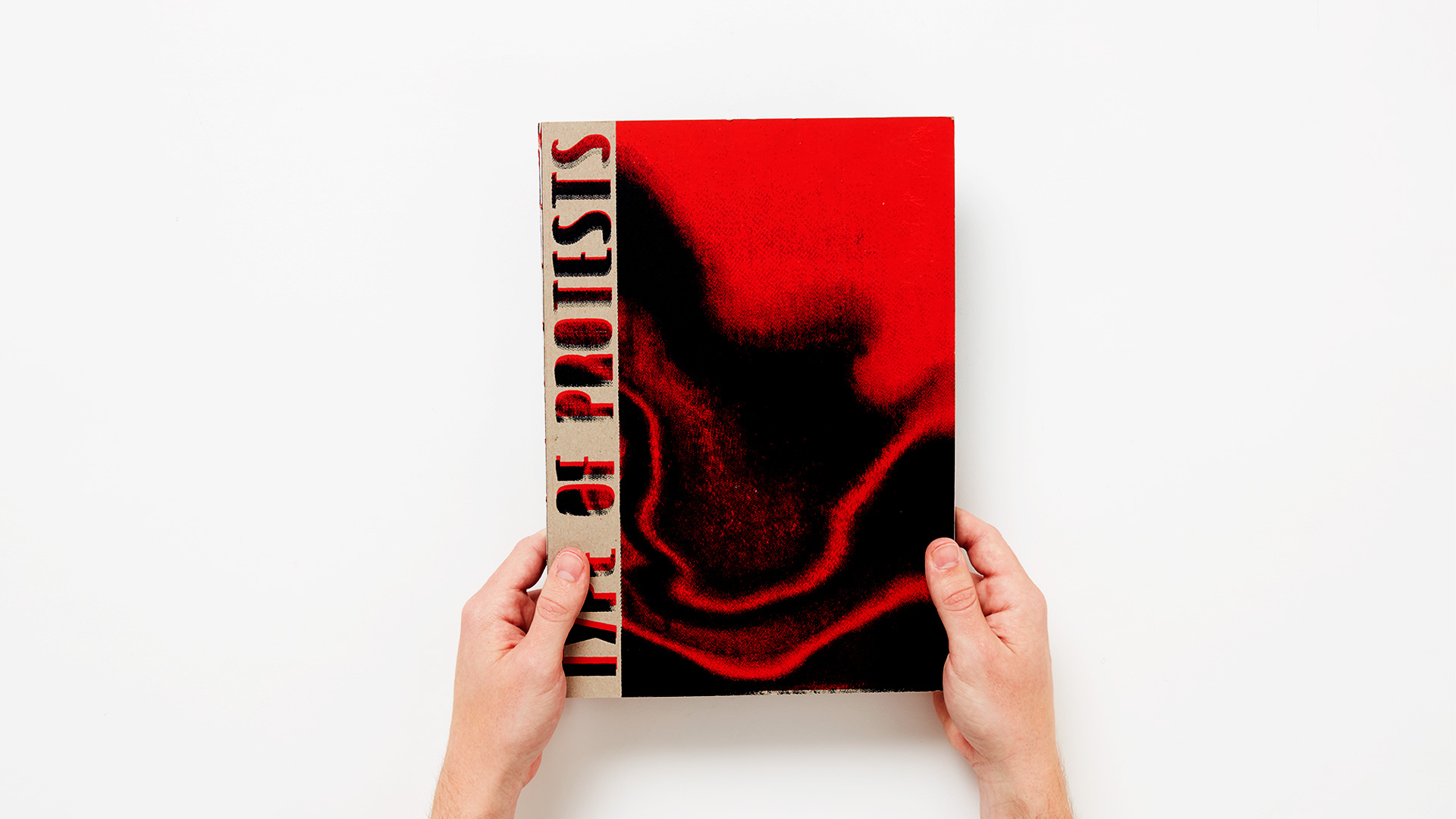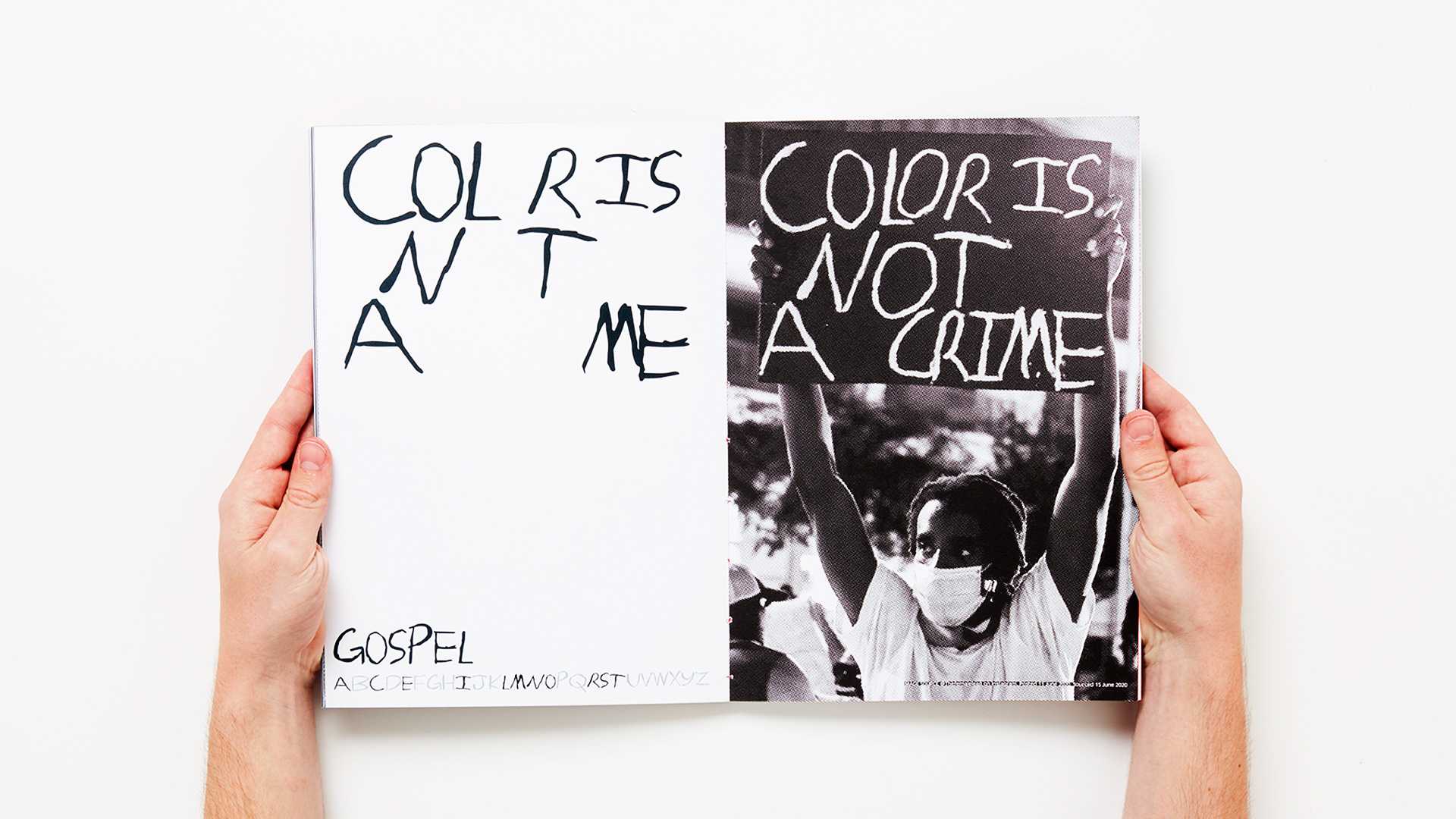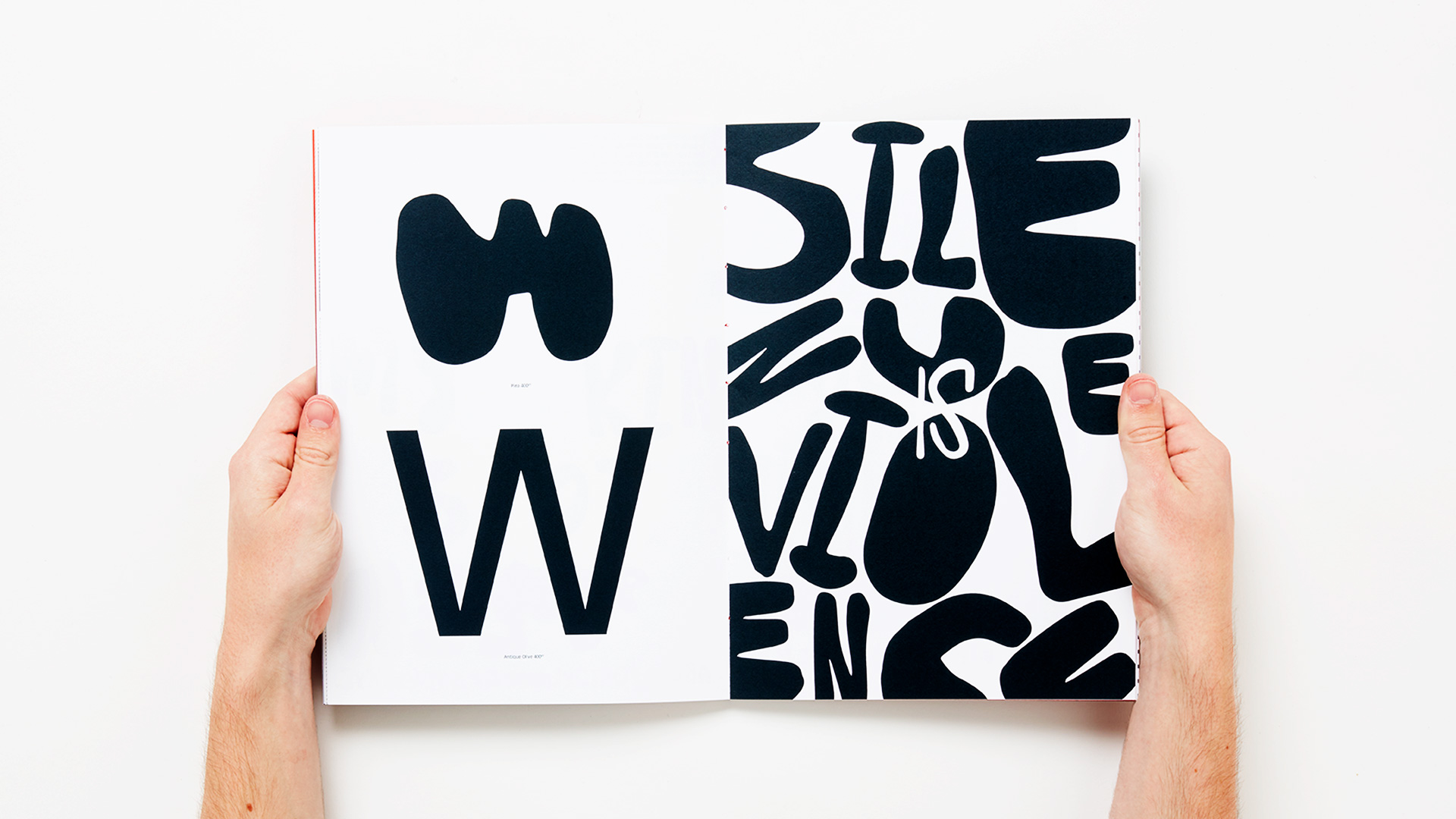
I got into design because I am a people person, and I just want to make things for people – it could be something revolutionary or something simple just to put a smile on someone's face. My practice is just developing and because of that, I don't really have a niche, but I'm especially fond of doing things manually, and I always begin any project with pen to paper, which is where I got the inspiration for my grad-show project. 2020 has been a year of change and with that change came protests; I observed these protests, even attended a few myself, and the project grew organically from there.
I have always had a passion for design for social good. I have grown up seeing people protest important social issues, using their voice to enact change, and I wanted to contribute, but also to try new things. This project was my first attempt at creating type and more than anything it was an experiment to understand and make expressive and emotive type and to make type that is representative of its original format/function/usage.
The most overwhelming insight I took from this project was that the type of protest changes the type on protest signs. That is to say that the underlying feelings, culturally, socio-politically, communally, all come to influence the way people protest. Human rights protests tend to be a bit more aggressive or expressive, especially after catalyst events, such as the murders of George Floyd and Breonna Taylor. The anger felt by people in the face of injustice translates to the materials of the protest — the signs, the medium, the lettering. Whereas protests held for long term issues — climate crisis, LGBT rights, suffrage — tend to be held as strikes or staged events, by individuals or groups, and tend to be more thought out, more considered, which shows in the type and the display.
I specifically focused on recent protest signs because I have a personal connection to them, I have grown up in the movements and I understand the situations more thoroughly than if I was looking into historical movements. That isn’t to say that today's movements aren’t fully influenced by the past, I would go as far as to say that these are continuations of those movements — the torch has been passed on. But without existing within the times, the nuance is lost, so I understand what is currently happening on a much deeper level. This book is a way to share some of these nuances with people who might have missed them or wouldn’t see them anyway. I can only speak for what I know, and to “stay in my lane” I can speak about the design of protest as being representative of a larger picture. The minutiae of the details on the sign communicate past the bounds of what is written on the signs.




